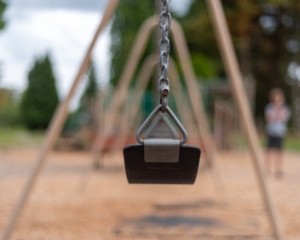This article was written for parents who sense something is not right with their child, but can’t tell if it is just a passing phase or if it is something they should be concerned about. It contains information about some of the most common mental disorders in children and teens, as well as the warning signs to be on the lookout for.
Children can develop the same mental disorders as adults, but exhibit different symptoms and not know how to explain what they are feeling or why they are acting a certain way, which makes it harder for parents to identify the problem. Recognizing the red flags can help you get your child the care he or she needs before it has a chance to intensify or turn into a mental health crisis. If you’re concerned about your child’s emotional well-being, reaching out to a professional like those at Redding Christian Counseling can provide valuable guidance and support in addressing these issues early on.
Common mental disorders in children and teens.
Anxiety.
Anxiety in children and teens tends to manifest as incessant worries or fears about everyday things, often accompanied by physical symptoms such as digestive issues or unexplained aches and pains, which have a negative impact on their ability to engage in play, school, or social activities.
Attention-Deficit/Hyperactivity Disorder (ADHD).
Children with ADHD have trouble paying attention, and may also be hyperactive and prone to acting impulsively.
Autism Spectrum Disorder (ASD).
Autism spectrum disorder typically manifests in early childhood, before the age of three, and manifests as difficulty communicating and interacting with others.
Eating disorders.
Children and teens with eating disorders tend to have dysfunctional thoughts about weight and weight loss, ideal body type, and dieting, and to engage in unsafe eating habits.
Depression.
Depression in children and teens typically manifests as persistent feelings of sadness, hopelessness, and lack of motivation, that negatively impact their ability to function in school or interact with others.
Bipolar disorder.
Bipolar disorder in children and teens affects their moods and manifests as extreme swings between emotional highs and lows.
 Obsessive-Compulsive Disorder (OCD).
Obsessive-Compulsive Disorder (OCD).
Children and teens with OCD have repeated intrusive, unwanted thoughts (obsessions) that create extreme anxiety and fear which they try to control by performing compulsive rituals. These obsessive thoughts and compulsive rituals can interfere with their ability to function in their everyday life.
Oppositional Defiant Disorder (ODD).
Children and teens with ODD are uncooperative and defiant toward their parents, teachers, and other authority figures.
Post-Traumatic Stress Disorder (PTSD).
PTSD typically manifests as persistent emotional distress caused by anxiety, flashbacks, and traumatic memories that interfere with normal daily functioning.
Schizophrenia.
Schizophrenia typically appears in the late teens and manifests as disordered thoughts and impressions that cause them to lose touch with reality.
Warning signs.
Although each mental health disorder has its own set of symptoms, the following are some common warning signs of mental illness you can be on the lookout for.
- Constant sadness or anxiety that lasts for two weeks or longer.
- Withdrawing from friends and family members, and avoiding social interactions.
- Loss of interest in activities they used to enjoy.
- Not wanting to participate in their regular sports activities or go to social events like birthday parties.
- Frequent disobedience or out-of-control behavior.
- Easily irritated.
- Tantrums or angry outbursts.
- Frequent mood swings.
- Inability to bounce back from the downs of life.
- Crying a lot or overreacting to things.
- Behaving in ways they have outgrown.
- Extreme concern that something bad may happen to them or someone close to them.
- Noticeable changes in behavior or personality.
- Changes in eating habits.
- Difficulty sleeping or sleeping too much.
- Frequent nightmares.
- Sudden weight gain or loss.
- Frequent unexplainable physical symptoms such as headaches, stomachaches, or joint pain.
- Trouble concentrating and remembering things.
- Hearing voices.
- Significant drop in grades at school.
- Behavior problems at school.
- Overwhelming episodes of fear or panic.
- Cutting classes or not wanting to go to school.
- Engaging in risky behaviors.
- Self-harm behaviors such as cutting or burning themselves.
- Suicidal thoughts.
- Turning to drugs or alcohol to try and cope with their feelings.
 Having just one or two of the symptoms on this list does not necessarily mean your child or teen has a mental disorder. However, if your child’s mood and behavior have suddenly changed, and their symptoms have lasted for two weeks or longer and are interfering with their performance at school and in their day-to-day life, it would be wise to have him or her evaluated by a trained mental health professional.
Having just one or two of the symptoms on this list does not necessarily mean your child or teen has a mental disorder. However, if your child’s mood and behavior have suddenly changed, and their symptoms have lasted for two weeks or longer and are interfering with their performance at school and in their day-to-day life, it would be wise to have him or her evaluated by a trained mental health professional.
If you have questions or would like to set up an appointment to meet with one of the faith-based counselors at Redding Christian Counseling in California, please give us a call.
References:
Mayo Clinic Staff. “Mental illness in children: Know the signs.” Mayo Clinic. March 2, 2022. mayoclinic.org/healthy-lifestyle/childrens-health/in-depth/mental-illness-in-children/art-20046577.
Photos:
“Swing”, Courtesy of Markus Spiske, Unsplash.com, CC0 License; “Swing”, Courtesy of Steve Smith, Unsplash.com, CC0 License; “Girl on Swing”, Courtesy of Annie Spratt, Unsplash.com, CC0 License




